NUTRITION HANDBOOK
contents
COOKING TOOLS
COOKING METHODS
MYPLATE MEALS
FOOD SAFETY
GO, SLOW, WHOA
FRUIT TIPS
VEGETABLE TIPS
HERBS & SPICES
FOOD STORAGE
FAMILY MEALS

COOKING TOOLS
COOKING METHODS
MYPLATE MEALS
FOOD SAFETY
GO, SLOW, WHOA
FRUIT TIPS
VEGETABLE TIPS
HERBS & SPICES
FOOD STORAGE
FAMILY MEALS
We’re a team of parents, educators, nutritionists, and volunteers who hope to make our world brighter, one bite at a time.
We believe good food should be as easy to find as it is to eat. So we’re here to help bring healthier choices into the homes, minds, and mealtimes of our community’s kids and their families.
We start by delivering fresh fruits and veggies directly into our kids’ hands, teaching them how to use and choose a different kind of fast food.
Each week, your child will take home two bags of fresh produce from school—bags chock full of everything from apples and oranges to kale and cauliflower—a colorful variety of foods all delicious and nutritious in their own unique way.
Use this handbook to find nutritious tips, tools, and ideas for preparation to help guide you and your student through the Brighter Bites season. For more ways to make the most of your produce each week, visit us online at brighterbites.org, and share your favorite ideas with friends and family.
While our team will get your kid(s) excited at school through yummy demos and samples, you are the biggest key to cultivating a healthy lifestyle for your family. Use Brighter Bites as an opportunity to spend the best part of the day—mealtime—together!
The first great rule of a great meal is to be prepared. Stock your kitchen with these simple standbys to help keep cooking smart, safe, and speedy.
USE TO: Scrub root vegetables, like carrots and potatoes.

TIP: Keep clean between uses, and replace every 3-5 months.


TIP: Never put raw meat or fish on the same board as raw produce without first cleaning with soap and water.
TIP: It's worth investing in a wooden spoon or two. Because they won't melt, they are the perfect kitchen companion for any cooking, stirring, or sautéing needs.

USE TO: Remove potato and carrot skins. Make thin strips of zucchini and cucumber.
USE TO: Roast your vegetables in the oven.
TIP: Find a tray with slightly raised sides for cleaner cooking.
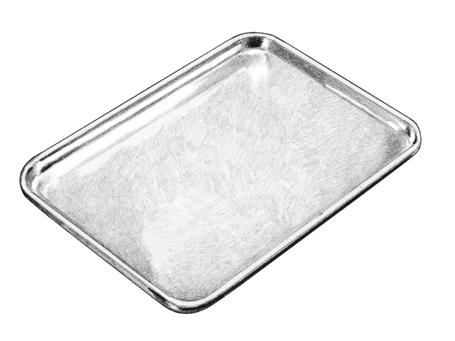
USE TO: Rinse fresh fruit and veggies, or thaw frozen ones. Drain pasta. Steam vegetables.
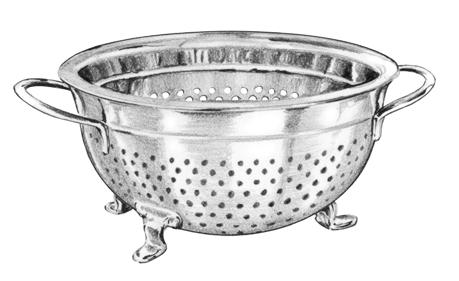
TIP: Why non-stick?
You can use less oil, which keeps meals healthier. But don’t use metal spatulas with non-stick surfaces, as they will scratch.
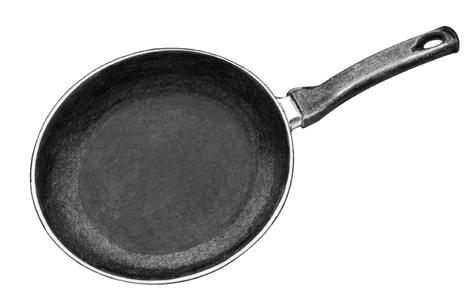
USE TO: Cut up lettuce and greens. Trim outside leaves and stems.
TIP: Make sure you buy the thick, sharp scissors found in the kitchen aisle; school scissors won’t get you too far!
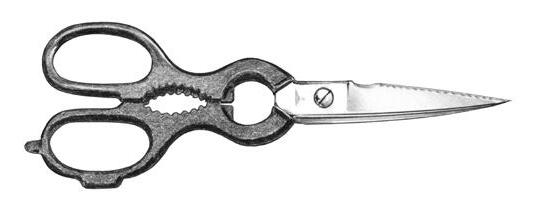

USE TO: Cook easy-cleanup veggies on the grill or in the oven. In the oven: Spread foil flat onto a baking sheet, then roast veggies at 350°. On the grill: Place foil over grill grates, poke holes, and cook veggies at medium or low heat. Both: Wrap veggies into a bundle and roast away! It’s quick, easy, and keeps foods low-fat: no extra oil needed.
USE TO: Store dry greens inside. Fill with wet greens and spin overhead to shake off water outside.
TIP: Choose a thin case. Make your own bag by sewing up sides of muslin / cheese cloth.
measuring cups & spoons
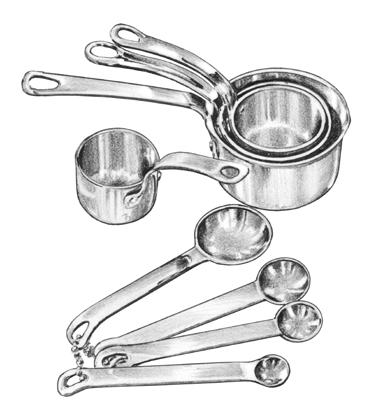
chef’s knife
USE TO: Cut, chop, slice, and dice.
TIP: Use side of knife to crush, and the heel (the bottom edge near the handle) to puncture hard veggies, like pumpkin.
USE TO: Trim leaves, flowers, stems, and roots.
TIP: Use for more control if chef’s knife feels awkward.
TIP: Never underestimate the importance of precision! One half-cup off can turn a dessert into a disaster. Always use proper measurements found in recipes (from cooks who learned the hard way!).
A KNIFE:
For grip and control, hold tightly on handle near the blade, placing thumb on one side of metal and inner edge of bent index finger on other.
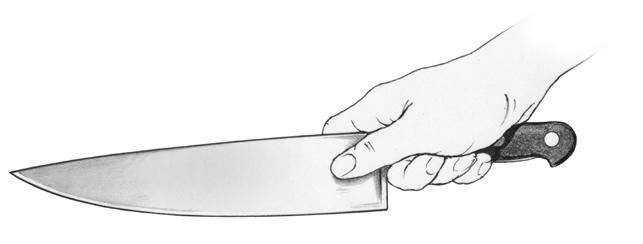
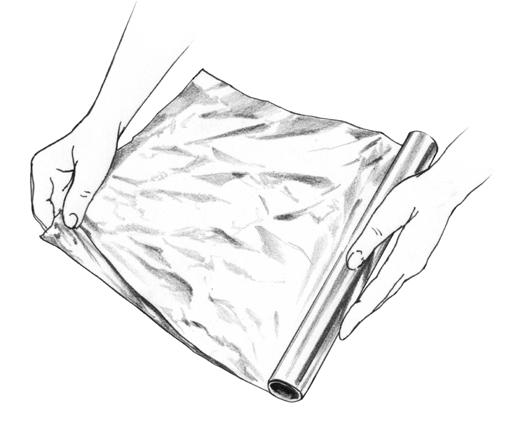
serrated (bread) knife




USE TO: Slice tomatoes. Peel or segment citrus or pineapple. Cut melons.
Sharp Knife = Safe Knife
A dull knife requires more force to cut, making accidents more likely.
Kiddos should never cook or use knives without adults nearby!
Raw or roasted? Steamed or sautéed? Whether you’re using an oven, a grill, or even your microwave, try these basic cooking methods to keep your food delicious and nutritious— in mere minutes!
Go all-natural: Enjoy an entirely different flavor (and typically more nutrients) when you eat your vegetables raw.
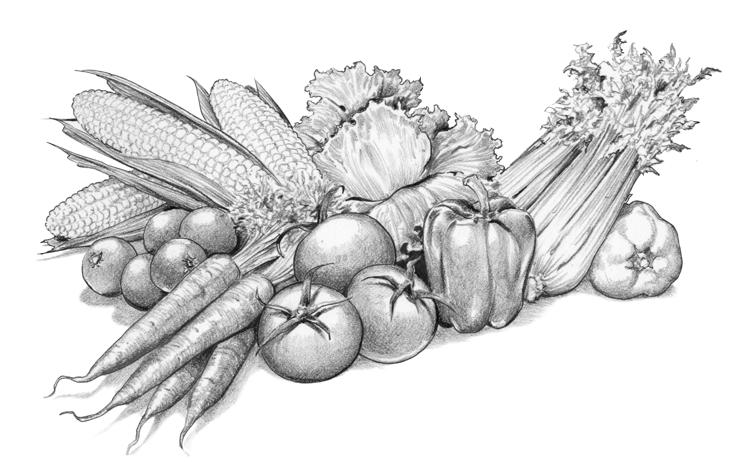
In addition to carrots, celery and tomatoes, veggies like jicama, zucchini, mushrooms and even pumpkin burst with unique flavor when served raw.
Go lean and mean: Outdoors, on a grill pan, in the broiler, or with a countertop grill, grilling is a fast and easy way to cook without adding extra fat—no need for more than a ½ tsp drizzle of oil on your veggies (if at all)
TRY IT: Grill vegetables by using skewers to make healthy kabobs, or toss chopped veggies into an aluminum foil bag and place on the grill alongside the other foods for your meal. Efficient and delicious!
Go crisp and colorful: Blanching helps preserve the texture of vegetables and enhances their color for a meal that’s as bright and crisp on your plate as your palate.
TRY IT: Boil water, add veggies, and cook for 2-3 minutes, uncovered. Drain in a colander and rinse under cold water.
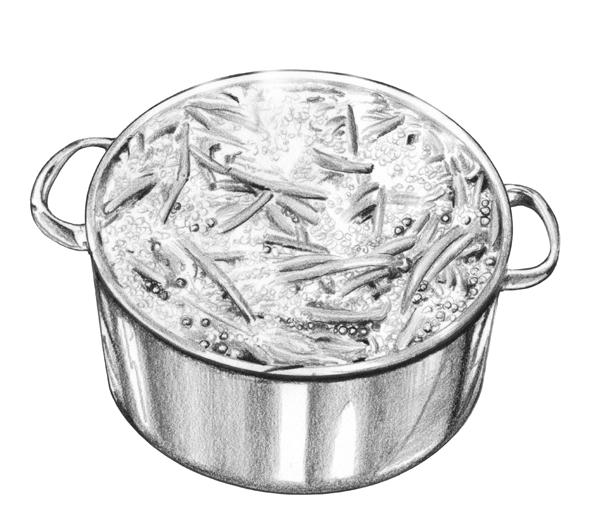
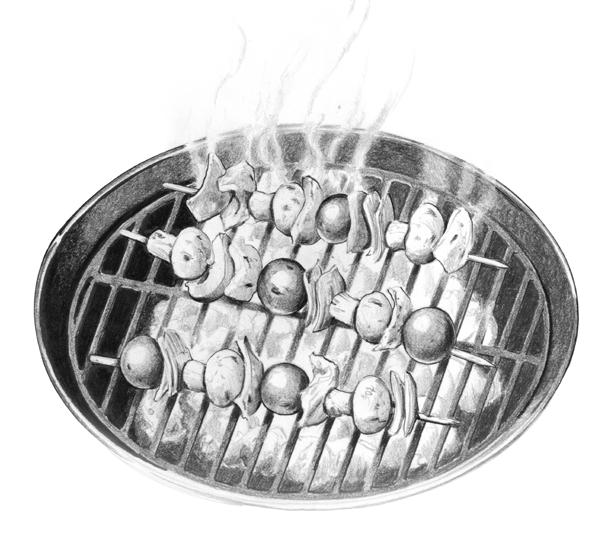
You only need a small amount (about 1-2 tsp) for most cooking methods. Avoid excess fat from oil and butter by using a cooking spray to lightly coat pans and skillets.
Sautéed or Stir-Fried
Spice things up: If you love garlic, herbs, and spices, sautéing is a quick and tasty way to add your own creative flair to a topping or side dish, especially with vegetables like zucchini, onion, bell pepper, and tomato.
TRY IT: Drizzle ½ tsp oil in pan. Once hot, add thin-sliced vegetables and your favorite seasonings, and cook for about 2 minutes. If they start to stick, add a splash of water instead of oil to keep things healthy.
Add tender, loving care: Baking and roasting adds tender texture, flavor, and color to your vegetables. Ideal for squash, carrots, broccoli, sweet potatoes, asparagus (and more!)
TRY IT: Toss chopped fresh or frozen veggies with seasoning and a dash of oil, spread onto a baking sheet or pan, and bake until tender in a 350° oven. Toss occasionally for even cooking.
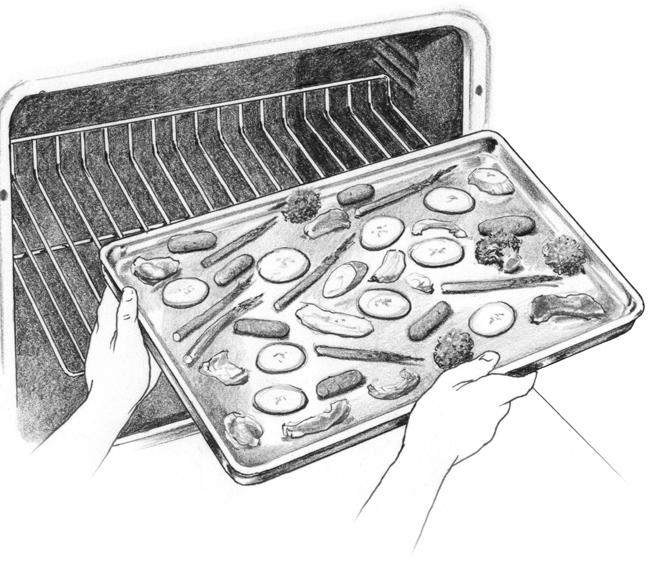
TRY IT: Prick vegetables (like potatoes) all over with a fork. Microwave on medium-high, turning food in 3-minute increments until tender.
Go fast and fresh: Steaming is a great way to cook vegetables, as it is fast, healthy, and helps retain vitamins and flavor.
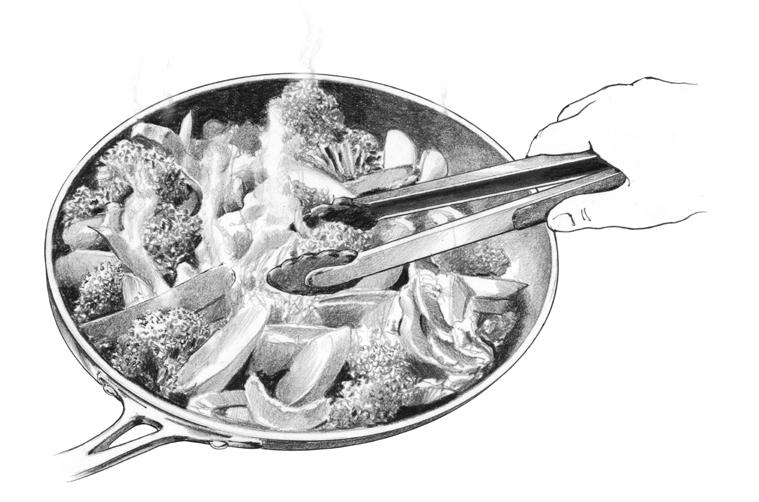
TRY IT: Add a halfinch of water to a pot and bring to a boil. Set veggies in water (or colander, if preferred). Cover tightly with lid and steam until tender, anywhere from 5 minutes (leafy greens) to 25 minutes (artichokes).
TRY IT: Place veggies into shallow dish with sides, add 3-5 tbsp water, and cover with a damp paper towel. Microwave on high in 2-minute increments until food is tender, but not mushy.
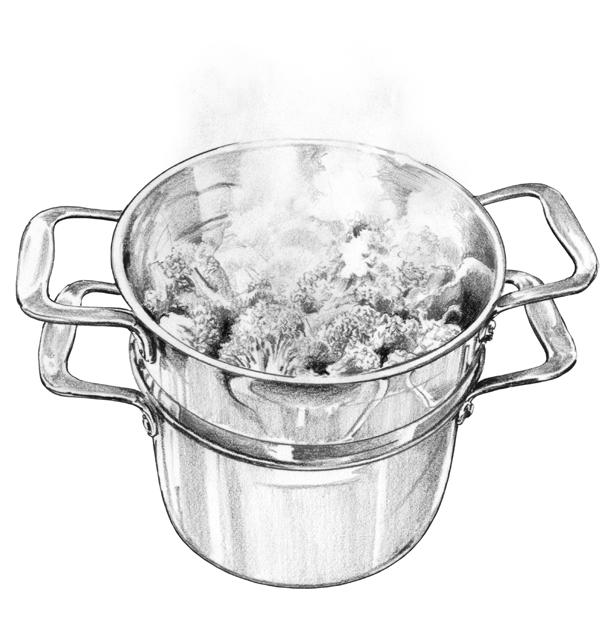
Better health starts with eating well-balanced meals that include plenty of fruits and vegetables—the building blocks of nutrition. Use MyPlate as a guide to incorporate all five food groups to create healthy meals.
THE FIVE FOOD GROUPS ARE:
Fruits
Vegetables
Grains
Proteins
Dairy
Healthy Tips:
Make half the plate fruits and vegetables.
To build a healthy meal, begin with more fruits and vegetables and fewer proteins and grains.
Use MyPlate as a guide to serve the correct portion sizes of each food group. Healthy habits start early.
Remember: YOU are the best role model for your child!
breakfast burrito
1 whole wheat tortilla (6-inch)
1 scrambled egg with
1 cup green bell pepper slices

Add salsa for an extra kick!
On the side: 1 cup of fruit, like a medium apple
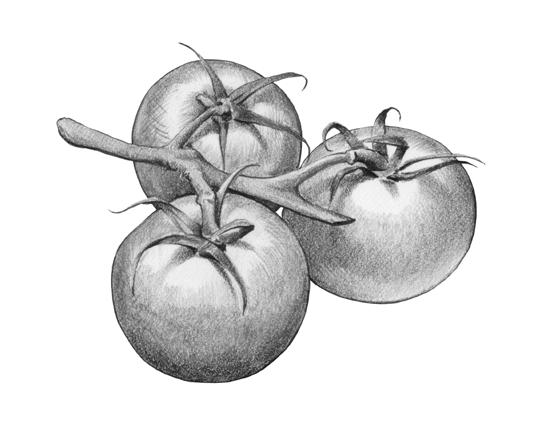
On the side: 1 cup fat-free milk
nutrition facts :
380 Calories; 9 grams fat; 9 grams dietary fiber
savory rice and beans
½ cup cooked brown rice
¼ cup cooked black beans
1.5 ounces (¼ cup) shredded
cheddar cheese
2 cups lettuce and sliced tomatoes
On the side: ½ cup raisins


nutrition facts :
490 Calories; 9 grams fat; 11 grams dietary fiber
turkey sandwich lunch
2 slices whole wheat bread
2-3 thin slices lean turkey
1 slice (1.5 ounce) cheddar cheese
1 cup raw spinach or lettuce
On the side: 12 baby carrots
On the side: 1 medium banana
nutrition facts :
458 Calories; 10 grams fat; 11 grams dietary fiber
italian spaghetti dinner
1 ounce lean ground beef with seasoning
½ cup whole wheat spaghetti pasta
1 cup tomato-based marinara sauce
1 cup sautéed zucchini
On the side: 1 cup strawberry slices
nutrition facts :
320 Calories; 4 grams fat; 8 grams dietary fiber
Proper food safety helps food last longer and taste better!
Storing fruits and vegetables properly will prevent the growth of harmful bacteria.
One in four people living in the United States will get an illness from food this year.
Children are more likely than adults to get sick from eating spoiled food.
Some foods need to be refrigerated, while others can be left at room temperature.
KEEP PERISHABLE FOODS LIKE THIS REFRIGERATED:
Meat, poultry, fish, eggs, pasta salads, and leftovers
Peeled or cut fruits and vegetables, including leafy greens like lettuce
Milk, yogurt, cheese, opened fruit juice, and opened canned foods
THESE CAN BE KEPT AT ROOM TEMPERATURE:
Whole or uncut fruits and vegetables
Bread products, cereal, and crackers
Unopened canned goods
Unopened fruit juice (if pasteurized)
Dried fruit
Nuts and peanut butter
Dried beans
Food can become unsafe to eat in just 2 hours if stored improperly.
Make sure all surfaces and supplies are clean before cooking.
Wash all fresh fruits and vegetables before eating.
Proper hand-washing is very important to keep food and family safe when cooking.

1. Use warm water and soap.
2. Completely wash all sides of hands and fingers, including wrists and fingernails.
3. Wash for at least 30 seconds—sing the ABC or Happy Birthday song!
To help children and parents make healthy food choices, your school is using a program called CATCH (Coordinated Approach to Child Health).
GO-SLOW-WHOA foods are great tools from the CATCH program to help you compare which foods are best to eat and when.
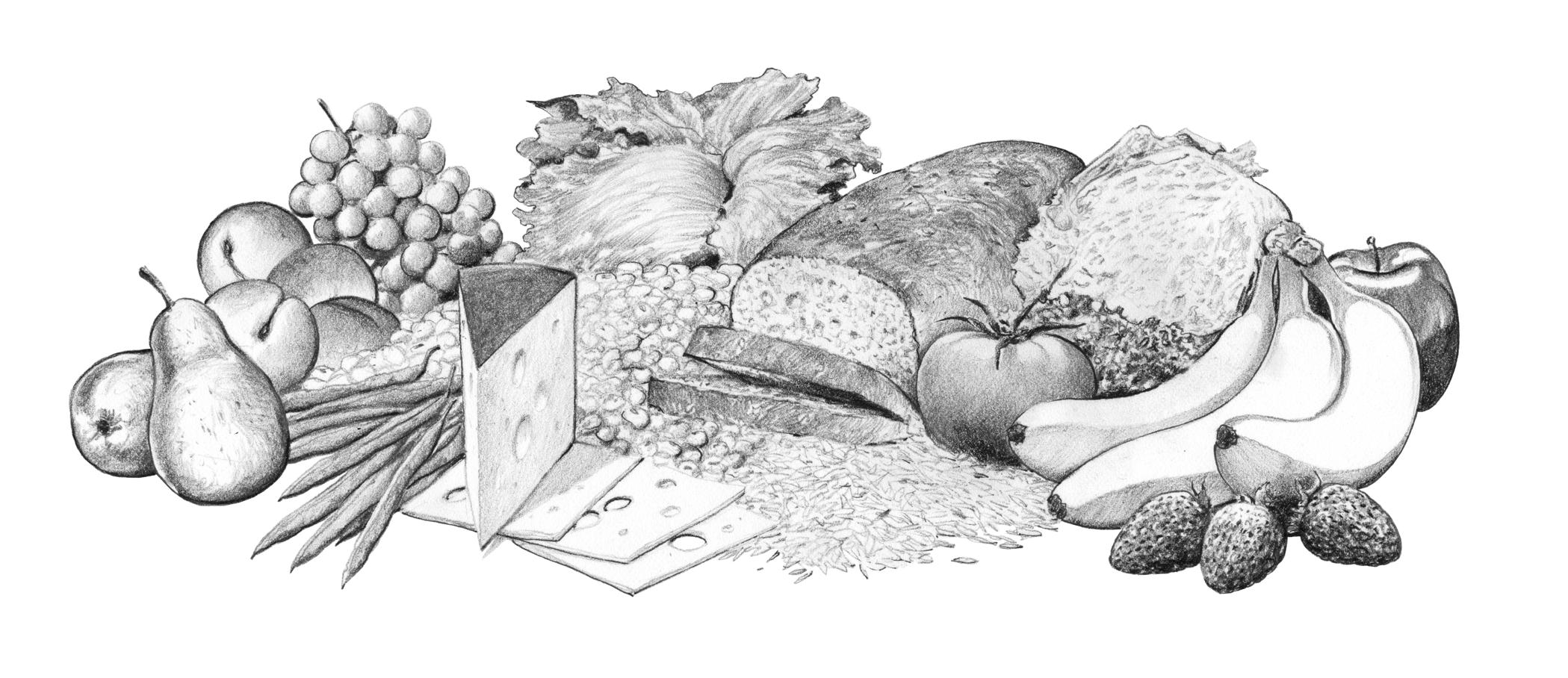
These are foods high in vitamins, minerals, and fiber. GO foods are also lowest in salt (sodium), added sugars, and unhealthy fats. Here are some examples:
“Whole foods,” like fresh fruits and vegetables
Whole grains, like brown rice, 100% whole wheat bread, and oatmeal (not instant)
Lean meats, grilled chicken (without skin)
Fat-free or 1% milk, low-fat cheese, low-fat yogurt (unsweetened)
Salsa, beans without salt or added fat
EAT SOMETIMES!
These are between GO and WHOA foods. Here are some examples:
Refined grains, like white bread, white rice, and white flour tortillas
Fruit with added sugars and/or salt
2% milk, whole milk, whole-milk yogurt (unsweetened)
Vegetables cooked in oil, like sautéed veggies
Peanut butter (without added salt, sugar, or oil), refried beans made with vegetable oils
EAT RARELY!
These are highly processed foods or foods that are highest in unhealthy solid fat, added sugars, and/or salt. These are unhealthy foods that lack nutrition. Here are some examples:
Chips, desserts, soft drinks (regular and diet), sugary cereals, and sweetened drinks
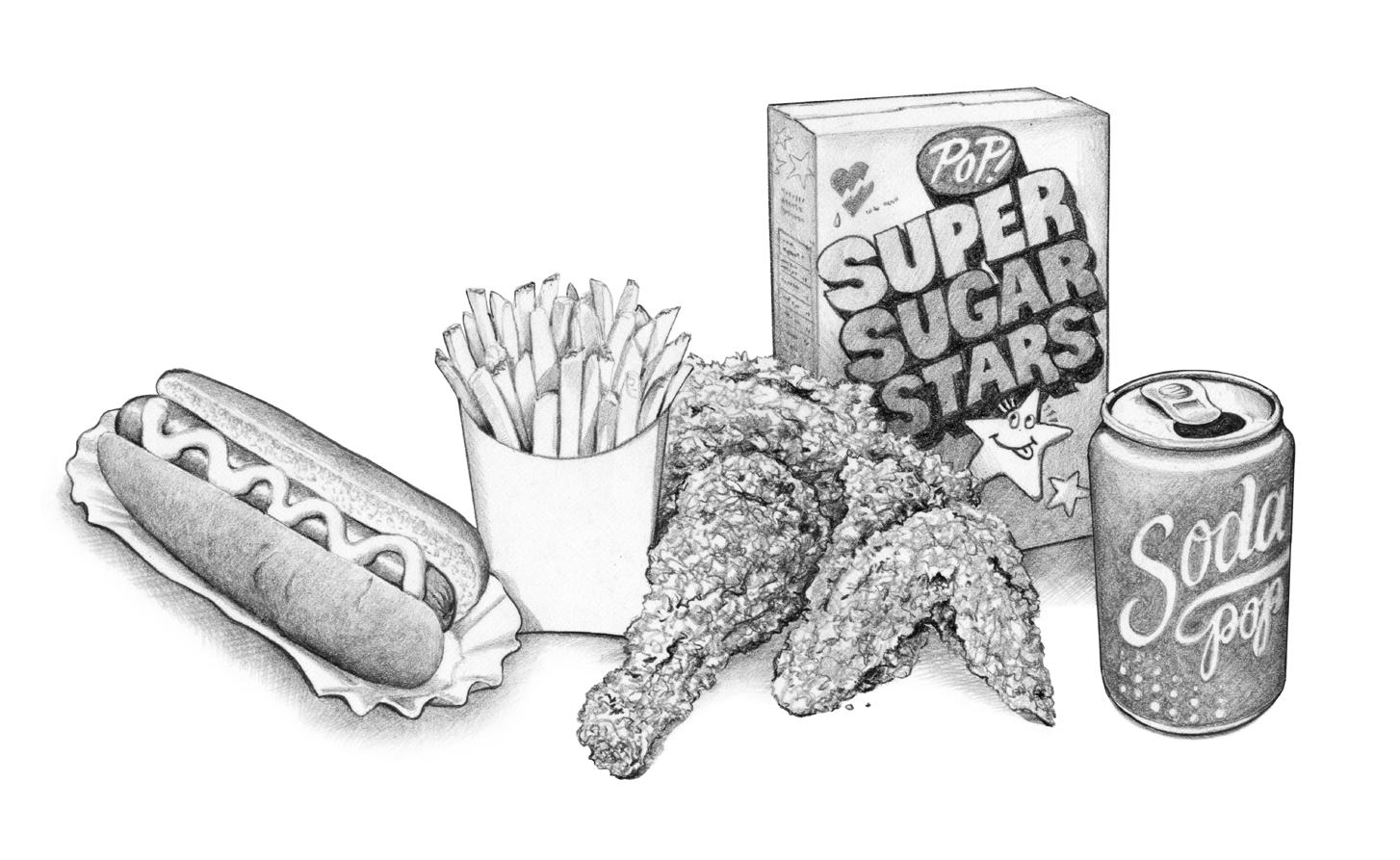
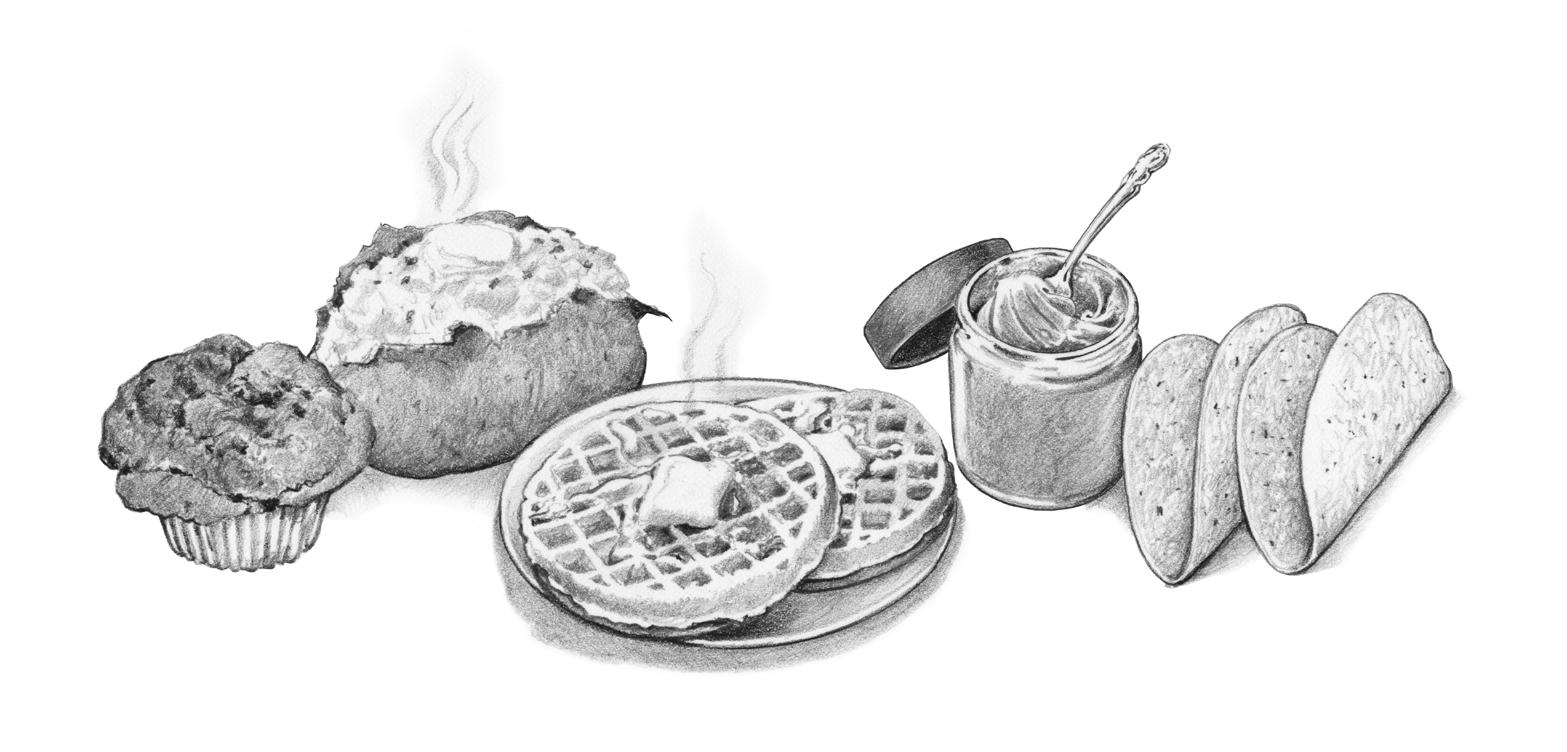
Sweetened (flavored) milk, butter, lard or any animal fat, regular sour cream, or mayo made with solid fats
Chicken nuggets, fried french fries, fried foods (e.g. fried fish), hot dogs, and bacon
Fruits canned in heavy syrup
Make



























































every bite a brighterbite.
Fruits and vegetables are as vibrant as they are versatile, and can be enjoyed a variety of ways throughout their life cycle. Use this prep guide to explore different methods for making the most of your produce, from smoothies to stirfry to shishkabobs—the options are endless!
see how many methods YOU CAN USE!




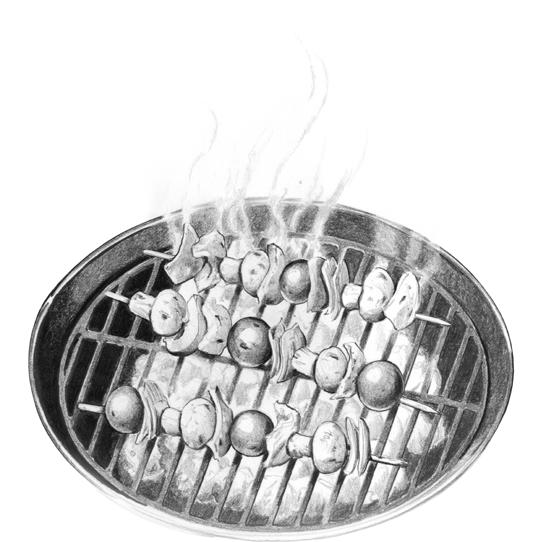

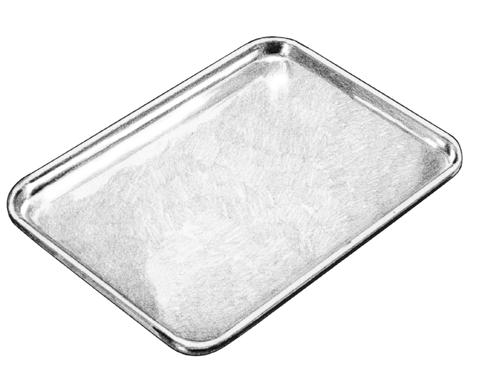
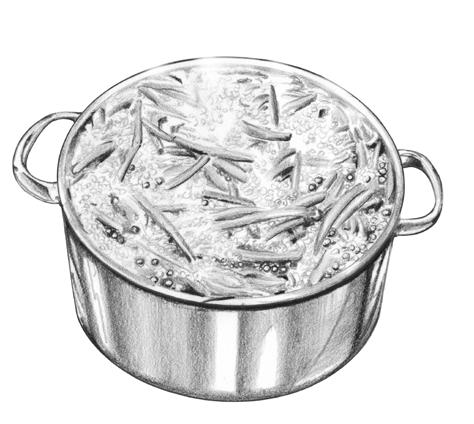
FRUIT / VEGETABLE
APPLES / PEARS
ASPARAGUS / BROCCOLI / CAULIFLOWER
AVOCADOS
BANANAS
BEETS
BELL PEPPERS / ONIONS
CABBAGE
CACTUS (NOPALES)
CANTALOUPE / HONEYDEW
CARROTS / CORN
CELERY
CUCUMBER / WATERMELON
GRAPES
GREEN BEANS
GREEN ONIONS
GREENS (COLLARD / MUSTARD / RADISH / TURNIP)
JICAMA
LEEKS
LETTUCE
MANGOES / ORANGES / GRAPEFRUIT
MUSHROOMS
PEACHES / PLUMS / NECTARINES
PINEAPPLE
PLANTAINS
POMEGRANATES / BERRIES / QUINCE
POTATOES / SWEET POTATOES
RADISHES
SPINACH / KALE
SUMMER SQUASH / EGGPLANT / ZUCCHINI
TOMATOES
WINTER SQUASH / PUMPKIN
/ STIR-FRY STEAM BOIL BLANCH ROAST GRILL Use In BAKED GOODS Make JAM / JELLY Add To SMOOTHIES
Eating a variety of fruit is important for health. Children need 2-3 fruits a day. Every fruit provides different vitamins and minerals, so mix it up!
DID YOU KNOW?
Fruit can be fresh, canned, frozen, or dried.
Fruits are a great source of Vitamin A, Vitamin C, antioxidants, and fiber.
Variety is important for complete nutrition!
Different colors usually indicate a variety of nutrients. Children need a variety of fruits to get all the nutrients their growing bodies need.
Challenge your family to see how many different fruits you can eat this week!
When buying canned fruits, choose fruits canned in 100% fruit juice or water instead of syrup.
If your child is eating whole fruit (fresh or frozen) , there is no need for fruit juice.
Kids need to eat 2-3 fruits every day!
Add an apple or banana to your child’s lunch. Grab some whole fruit, like an orange or a pear, for on-the-go snacking.
Kids eat with their eyes. Keep a bowl of fruit out at home.
Try serving new fruits with low-fat yogurt dips, or in fruit smoothies with fat-free milk.

Eating a variety of vegetables is important for health. Children need 2-3 vegetables a day. Every vegetable provides different vitamins and minerals, so mix it up!
CHOOSE A VARIETY OF VEGETABLES FROM THE FOLLOWING GROUPS:

Dark green veggies: broccoli, kale, spinach, asparagus, romaine lettuce, cabbage
Red and orange veggies: squash, carrots, tomatoes, red and orange bell pepper
Other veggies: avocado, celery, cucumbers, zucchini, green bell pepper, eggplant, cauliflower, onions
Starchy veggies: corn, sweet potatoes, white potatoes, green peas
Kids need to eat 2-3 veggies every day!
A diet rich in colorful vegetables is high in fiber, vitamin A, vitamin C, antioxidants, and folate.
Children are more likely to eat vegetables when they see their parents eating them.
Set a goal to see how many different vegetables your family can eat this week!
Fresh or frozen vegetables are great ways to help your family get balanced nutrition.
If buying canned vegetables, choose only low-sodium varieties.
EXPLORE: Let your child select a new fruit or veggie for everyone to try.
START SMALL: Introduce one food at a time, and offer 1-2 bites to start.
TIME IT RIGHT: Offer new foods when children have a good attitude. Serve them at the beginning of the meal when your child is hungry.
NAME IT: Give foods a fun name. Broccoli can be “little trees”!
SET AN EXAMPLE: If you like it, your child will usually like it, too.
KEEP TRYING: It can take up to 12 times before a child will like a new food, so don’t give up. Try serving new veggies with a healthy dip, like low-fat dressing, hummus, or avocado.
PAIR IT: Serve new foods with familiar or favorite foods.
Fresh herbs, spices, and seasonings are a delicious way to add flavor to your meals without adding fat and calories. Experiment with different amounts until you reach your favorite creative combo.


CHECK INGREDIENTS: Make sure to buy spice mixes that do not contain salt. Don’t worry—they will taste just as good!
BUY IN BULK: Save time and money by purchasing spices in bulk, and buy little bags as you need. Bulk spices can be found in larger grocery stores and international stores in the bulk aisle.
RE-USE & REFILL: Keep your jars of original spices, and refill them with the spices you buy in bulk.



GO GREEN: Make sure leaves are fresh and green, with no yellowing.
Thyme
BAG & BUNCH: Store herbs in a pillowcase or muslin cloth bag in the fridge, or suspend bunches of herbs by a string to dry out.
FREEZE UP: Herbs freeze well. They may change color but will typically retain their flavor.


A Healthy Side Kick Many sauces contain added sugar or salt. For a healthy flavor, try substituting lemon or lime juice, or make your own salsa! Chopped fruits and vegetables make a tasty topping for grilled meats or sides.
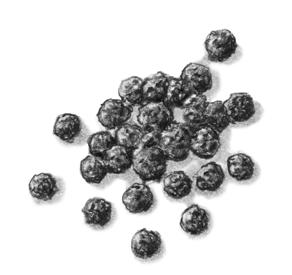
Whichever flavor you're craving, use the guide below to add a dash of round-the-world flair to your meals.
HERB/SPICE/SEASONING
BASIL
BLACK PEPPER
CAYENNE
CILANTRO
CINNAMON
CLOVE
COCONUT
CORIANDER
CUMIN
FIVE-SPICE
GARLIC
GINGER
GREEN ONION
HABANERO CHILI
JALAPE Ñ O
LIME
ONION
OREGANO
PAPRIKA
RICE WINE VINEGAR
ROASTED SESAME OIL
SOY SAUCE
THYME
TOMATO
LATIN CAJUN CHINESE ITALIAN INDIAN CARIBBEAN
LEGEND SWEET: HOT: SAVORY:

Make fresh food last longer by freezing, pickling, or jamming your leftover produce. A little effort can go a long way!
PEEL & SEAL: Always wash, cut, and peel produce before freezing, and use freezer bags or containers for storage.
COOL DOWN: Make sure foods cool to room temperature before placing into freezer. Almost all vegetables can be frozen if cooked into soups or stews first.
SMOOTH OVER: Frozen fruit or vegetables that are mushy after thawing are perfect for use in smoothies or cooked dishes.
Don’t throw away those extra veggies! Make a sweet, salty, or spicy pickling liquid and save your produce for months of munching.
cucumbers, radishes, carrots, okra, pearl onions, beets, cabbage, peppers, garlic, grape tomatoes
Use up extra-ripe or previously frozen fruit by making jam.
Pectin, which is what makes jams gel together, is an element naturally found in the skin of many fruits, and especially in citrus rinds. Use a peeler to remove a bit of lemon rind and add to your fruit as it cooks.
Note: Papaya, pineapple, and other exotic or tropical fruits do not contain pectin.
basic pickling liquid
3 cups white or apple cider vinegar
3 cups water
¼ cup sea salt
¼ cup sugar (for sweet pickles)
2–4 dried hot chilies (for spicy pickles)
Dried herbs & spices (mustard seed, celery seed, bay leaf, peppercorn, etc.)
Add all ingredients to a large pot. Heat until salt and sugar (if using) are dissolved. Once liquid has cooled to room temperature, pour over vegetables in a clean jar. Top with clean lid and store in fridge for at least two days and up to one month.
basic fruit jam
1 cup fresh or frozen berries
1 small piece of different fruit (plum, peach, etc.)
½–¼-inch slice lemon peel
1 tbsp sugar
Slice fruit and add to a small pot over medium heat. Cook 5 minutes. Add berries and sugar, and cook over medium-low heat 30 minutes, stirring occasionally.
Peel a piece of lemon rind. Remove any excess white part with knife, as anything but yellow rind can result in bitter flavor. Add slice of lemon peel to pot and cook a further 10-15 minutes or until thickened. Pour into a shallow dish, and spread along the bottom so the jam cools to room temperature. Put in clean jar or bowl and keep in fridge for about 10 days.
Kids who eat more family meals have better health.
Homemade meals are more likely to be nutritious.
Cooking and sharing a meal together is a great way to pass on cultural traditions.
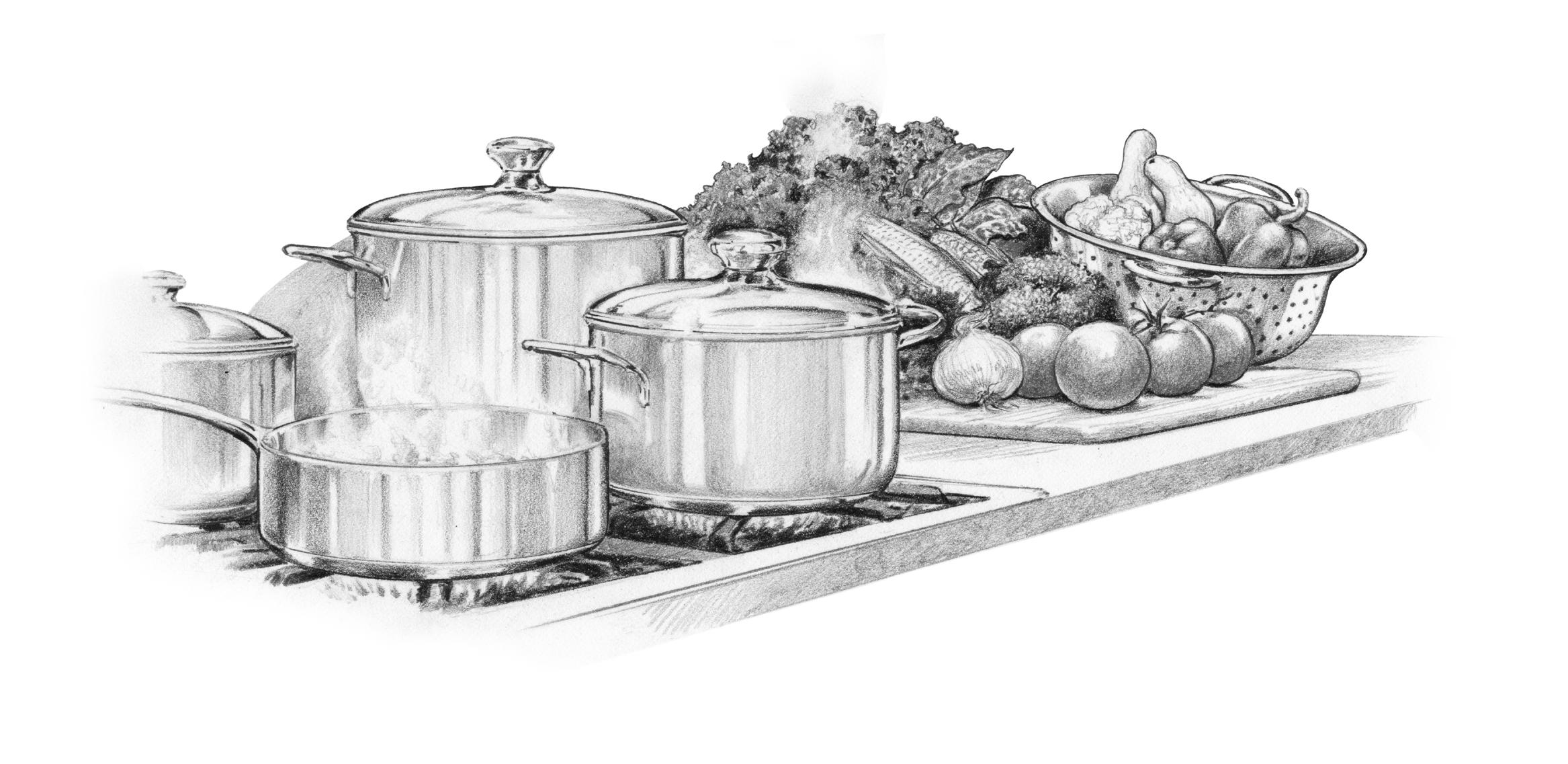
Keeping mealtime important makes families stronger.
Family meals are a great time to explore new foods.
If children see you trying a new food, they are more likely to taste it themselves and like it!
Aim to have at least 4 family meals this week!
Enjoying fruits and vegetables
Skipping unhealthy snacks
Doing better in school
Maintaining a healthy weight
“ONE-DISH WONDERS,” like soups, stews, and casseroles, are easy homemade meals, but make sure they are low in SLOW foods and high in GO foods.
Let your kids help with simple tasks, like washing produce or setting the table.
Try frozen vegetables—they cost less, cook quickly, and are just as nutritious as fresh veggies.
Keep it simple—salsa or pasta sauces are easy marinades for meat. To save time, make a big meal and save leftovers to use later.
Use family meals as a great opportunity to talk about what your child is learning about nutrition in the CATCH lessons at schools.
Turn off the TV to keep mealtime special and free of distractions!
Make mealtime matter anytime! Family meals can be breakfast, lunch, or dinner, on weekends or on weekdays.
CONTACT US info@brighterbites.org
WWW.BRIGHTERBITES.ORG
BRIGHTER BITES FOUNDERS
Lisa Helfman, JD
Shreela V. Sharma, PhD, RD, LDDesign and Copy: PRINCIPLE & UTDH
Illustrator: Mike Guillory
This institution is prohibited from discriminating on the basis of race, color, national origin, disability, age, sex, and in some cases, religion or political beliefs. The U.S. Department of Agriculture also prohibits discrimination based on race, color, national origin, sex, religious creed, disability, age, political beliefs or reprisal or retaliation for prior civil rights activity in any program or activity conducted or funded by USDA.
Persons with disabilities who require alternative means of communication for program information (e.g. Braille, large print, audiotape, American Sign Language, etc.), should contact the Agency (State or local) where they applied for benefits. Individuals who are deaf, hard of hearing, or have speech disabilities may contact USDA through the Federal Relay Service at (800) 877-8339. Additionally, program information may be made available in languages other than English.
To file a program complaint of discrimination, complete the USDA Program Discrimination Complaint Form, (AD-3027), found online at: http://www.ascr.usda.gov/complaint_filing_cust.html and at any USDA office, or write a letter addressed to USDA and provide in the letter all of the information requested in the form. To request a copy of the complaint form, call (866) 632-9992.
Submit your completed form or letter to USDA by:
Mail: U.S. Department of Agriculture
Office of the Assistant Secretary for Civil Rights 1400 Independence Avenue, SW Washington, D.C. 20250-9410
Fax: (202) 690-7442
Email: program.intake@usda.gov
For any other information dealing with Supplemental Nutrition Assistance Program (SNAP) issues, persons should either contact the USDA SNAP Hotline Number at (800) 221-5689, which is also in Spanish, or call the State Information/Hotline Numbers (click the link for a listing of hotline numbers by State); found online at: http://www.fns.usda.gov/snap/contact_info/hotlines.htm.
To file a complaint of discrimination regarding a program receiving Federal financial assistance through the U.S. Department of Health and Human Services (HHS), write: HHS Director, Office for Civil Rights, Room 515-F, 200 Independence Avenue, S.W., Washington, D.C. 20201, or call (202) 619-0403 (voice) or (800) 537-7697 (TTY).
This institution is an equal opportunity employer and provider.
Copyright © 2016 Brighter Bites | Nutritional content provided by University of Texas School of Public Health
Copyright © 2016 Shreela Sharma, PhD, RD, LD, Lisa Helfman, JD, Christine Markham, PhD, and University of Texas School of Public Health
This nutrition manual was funded, in part, by the Brighter Bites grant program administered by the Texas Department of Agriculture, and in part by USDA’s Supplemental Nutrition Assistance Program: SNAP.
If you have any questions, comments, or feedback, we’d love to hear from you. The more involved you are in your family’s health, the brighter everyone will shine. We can’t wait to see you next season!
is rooted in the belief that if we give our kids something better to munch on, THEY
and the lives they lead will be as vibrant as the foods THEY CRAVE.
WILL.
